By Bill Adams
Observations include features I personally liked, or disliked, and some I don’t understand. Due to the crowds and commotion in setting up, vendors were not interviewed. Opinions are from a past-his-prime player no longer active in the fire service. Comments made, questions asked, and what I’d do might be germane to today’s purchasers.
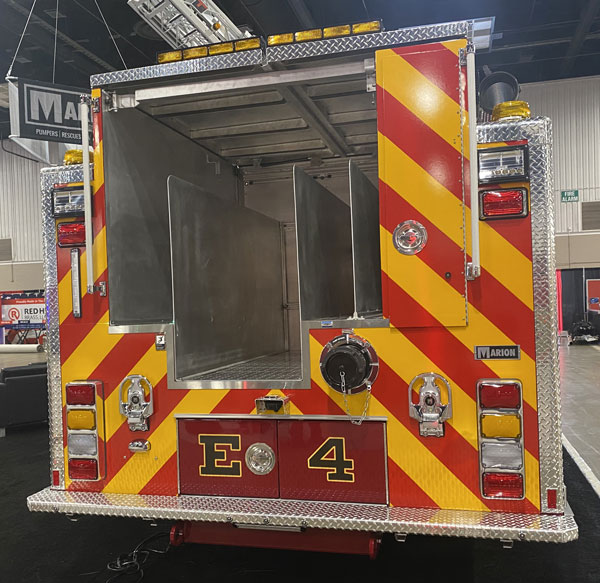
1. How often do you lay large-diameter-hose (LDH) from a crosslay or the front bumper? The rear LDH pump intake on this Marion is easily reachable from ground level. Throw excess hose to a non-traffic side before charging. Don’t block the road using a side inlet. From the top of the lowest hosebed divider to the top of the hosebed is unused space that you paid for. I like upper-level amber lights at the rear especially when in the blocking mode. Presumably the rear suction elbow will be added later. I’d eliminate lower compartment doors to store the hydrant make-up and perhaps preconnect a short LDH line to the inlet.

2. Is this Itturi America an NFPA 1900 compliant mini-pumper or a Type 6 wildland or a Type 1 pumper? It has a big tank for a small chassis. Itturi is a Spain-based company.

3. This rig’s rear step (aka tailboard or rear-work platform) has large angled corners. A major concern, especially on ladder trucks, is rear-end swing-out when cornering and backing up. How much does angling the rear step reduce it? Is it cost-effective? Angled front bumpers will be addressed later.
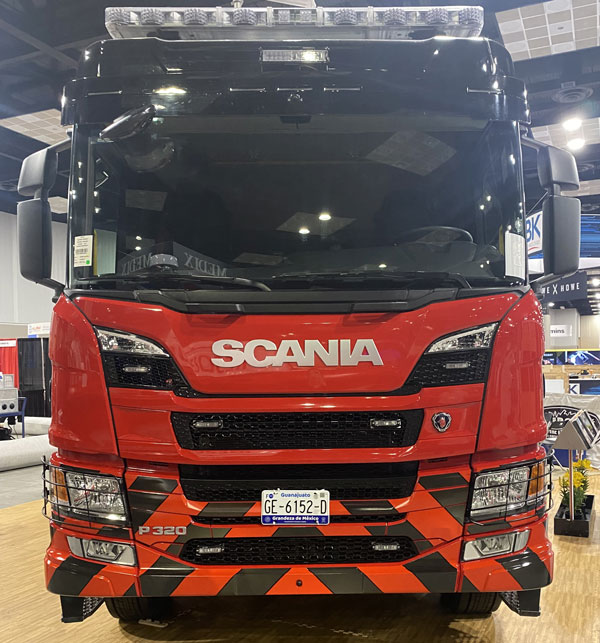
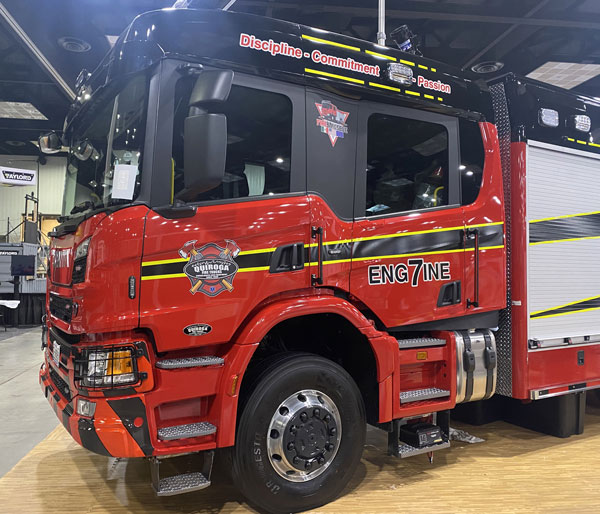
4 and 5. Mexican builder Quiroga Fire Trucks displayed this rig mounted on a Scania four-door cab and chassis. Built in Sweden, the Scania is very popular in Europe. It may be a viable option to domestic cabs and chassis. Unknown if Scania calls it a custom fire chassis or a commercial chassis. Also unknown is whether gross vehicle weight rating (GVWR) and chassis components such as motor and drivetrains are suitable for the domestic fire service and meet the NFPA’s requirements. At least the steering wheel is on our side.


6 and 7. I’ve heard of pumper-tankers and tanker-pumpers. However, this Toyne is the first rig I’ve seen also lettered Attack Tanker. The officer’s side Storz discharge is reduced down to 2.50-inches. There’s a manual valve on each side Storz inlet.

8. It’s aggravating seeing valves or adaptors extending beyond the running boards and rub rails. By the time the driver hears the crunch and grinding, costly damage could be done to the piping and even the pump itself. Same goes for rear inlets.

9. This rig’s LDH connections are protected. Full width and depth open grip-strut type grating on the running boards enhances firefighter safety. Make sure your specs say full width and full depth.

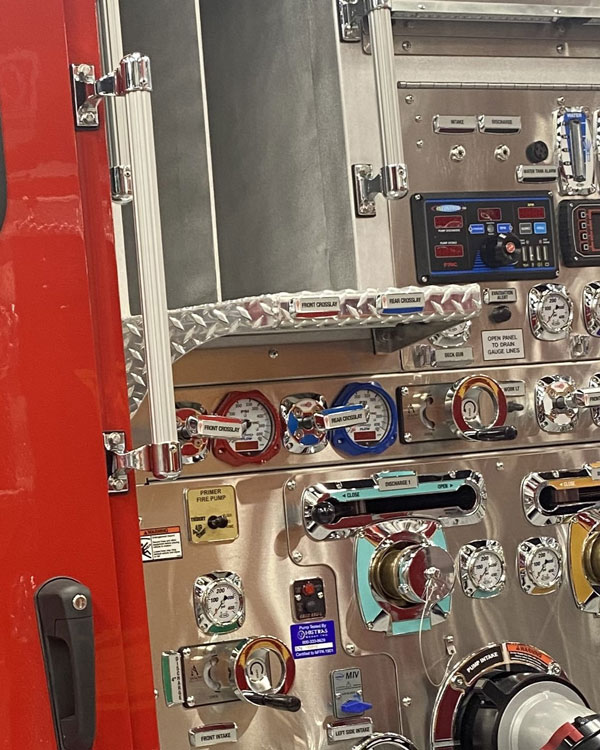
10 and 11. Pressurized discharges and inlets shouldn’t be close to any important body parts. Deployed crosslay hose often obscures gauges and interferes with accessing push/pull controllers. This E-ONE’s compact pump panel has a bolt-on treadplate extension (launch pad) to keep deployed hose away from the panel. Be aware of the open hose wells when repacking crosslays. All 10 discharges are manually controlled and three of the pressure gauges also indicate flow. Master gauges are stacked one above the other.
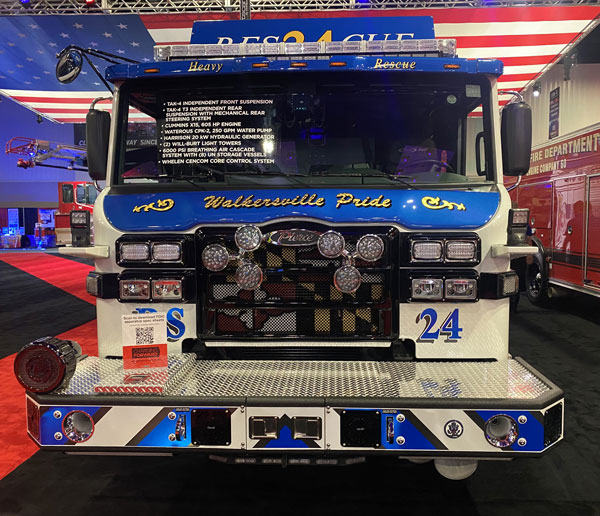
12. The front of this Pierce rescue is interesting. Unique are twin Roto-Rays. Equally unique is that they’re mounted below the windshield and are not distracting to or obscuring the driver’s view. The blacked-out décor appears aesthetic rather than functional (note the side west coast mirror arms, air horns, tow eyes, air horns, treadplate, bumper attachment bolts, and the two forward-facing paddle latches). It’s unknown what’s underneath the well-extended bumper, or in the enclosed compartment on top of it. Remember angle-of-approach.
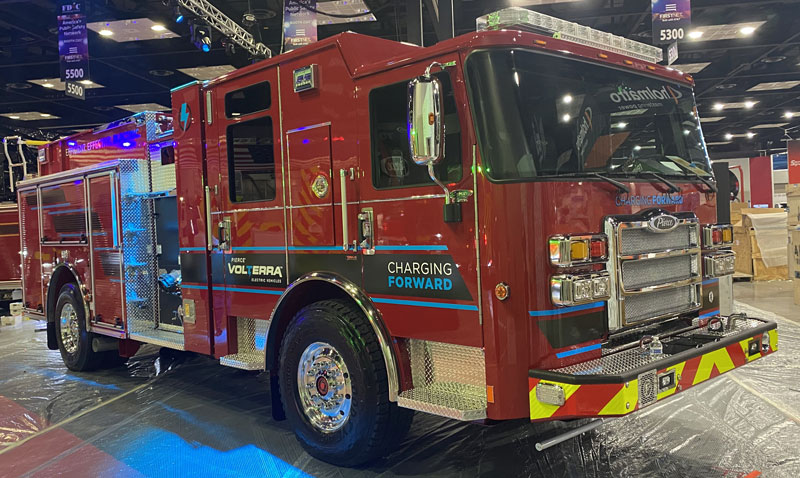
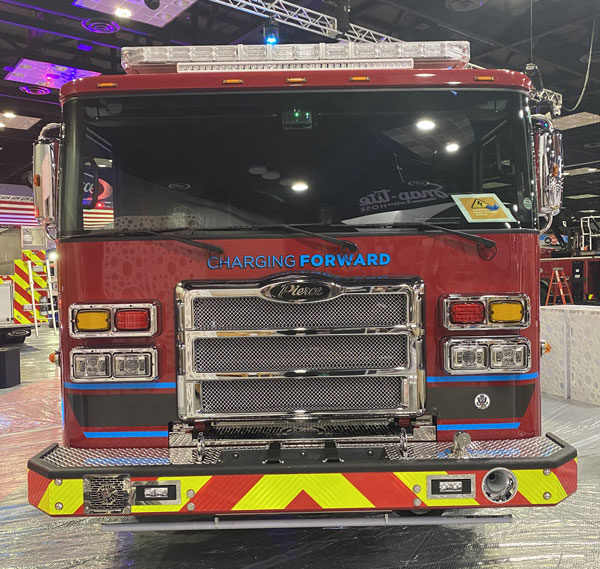
13 and 14. This Pierce Volterra electric pumper had an unknown full-width gray bar underneath the front bumper. After a week trying to figure out what it was, I called one of their reps who said it was an LED blue emitter light that was added to showcase the rig. There also was one behind the fuel tank.
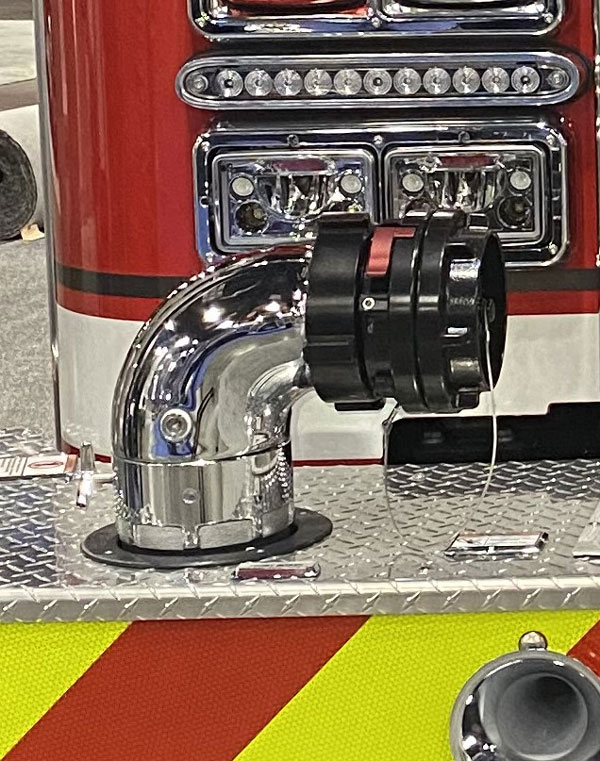
15. Say a rig is involved in a night-time accident. Could having a partially obscured headlight leave the apparatus manufacturer or the fire department liable?
BILL ADAMS is a member of the Fire Apparatus & Emergency Equipment Editorial Advisory Board, a former fire apparatus salesman, and a past chief of the East Rochester (NY) Fire Department. He has 50 years of experience in the volunteer fire service.

